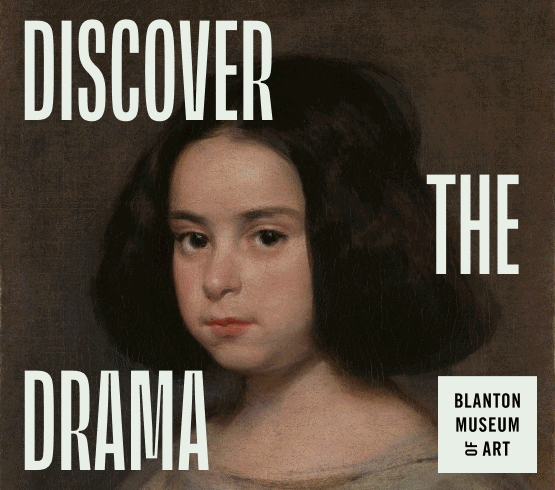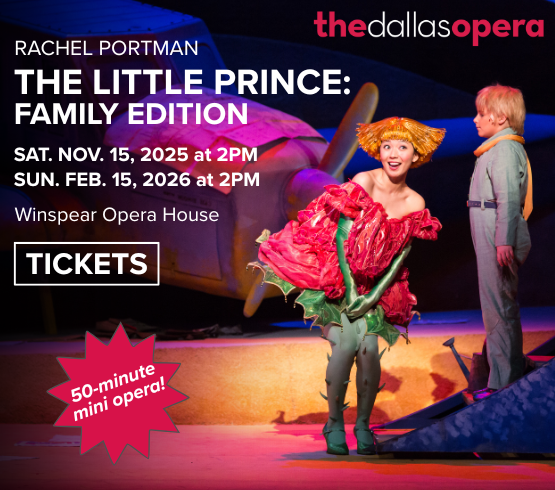Ars Lyrica Houston is adding a twist to its usual what’s-old-is-new-again programming: In the midst of the neglected gems that it has in store for next season, Houston’s baroque ensemble will throw in some works that actually are new. Yes, the group will unleash its period instruments on contemporary music—including its first commission.
The vintage portion will include a keyboard concerto by Wilhelm Friedemann Bach, J.S.’s eldest son. Ars Lyrica will surround that with the works of present-day artists including Karol Beffa—a French composer and pianist who started out as a child actor, playing roles including the 8-year-old Mozart. (How many composers featured by Ars Lyrica have entries on imdb.com?) If that sounds lightweight, note that Beffa went on to a master’s degree in philosophy from Cambridge University on top of his music training from the Paris Conservatory.
“He has written quite a few really interesting chamber pieces,” says Matthew Dirst, Ars Lyrica’s founder and artistic director. Dirst has picked Destroy, for amplified harpsichord and string quartet.
“It’s a very lively kind of piece, with infectious rhythms throughout—lots of ostinatos,” Dirst says. “It’s great fun to listen to and to play.” While Beffa envisioned the quartet using modern steel strings, Ars Lyrica’s players will opt for old-school gut strings. “He didn’t necessarily write it for period instruments, but it’s certainly performable on them. So we’re going to give it a go.”
“We know and trust Emma and like her music,” Dirst notes. As witness to the trust part of that, he doesn’t venture to predict what the new work will be like, saying only that it will last five to seven minutes and employ some mix of Ars Lyrica’s core musicians.
“We’ll see what she chooses to come up with. I don’t know yet,” Dirst adds with a laugh. “That’s part of the fun.”
Ars Lyrica will open its season by spotlighting two Baroque icons—J.S. Bach and George Frideric Handel—alongside their less celebrated contemporary, Johann Adolf Hasse (Sept. 20).
Bach’s Ich bin vergnügt, a solo cantata for soprano, is a lyrical work featuring “luscious, gorgeous textures,” Dirst notes. “It deals with the issue of virtue through a Christian lens—in other words, rejecting worldly pleasures and goods, and relying on contentment and personal responsibility.” Hannah DePriest, a young soprano with “a wonderful voice,” Dirst says, will sing it in her Ars Lyrica debut.
Handel’s more exuberant Splenda l’alba in oriente salutes St. Cecilia, a fourth-century martyr and the patron saint of music. Another solo cantata, it will bring back countertenor Aryeh Nussbaum Cohen, an HGO Studio alumnus whose agility and style have made him an Ars Lyrica favorite. (Cohen will return to Houston on Feb. 24 in a recital for DACAMERA.)

1 ⁄8
Countertenor Aryeh Nussbaum Cohen; Photo courtesy of the artist.

2 ⁄8
Violinist Cynthia Roberts; Photo courtesy of the artist.

3 ⁄8
Soprano Hannah DePriest; Photo courtesy of the artist.

4 ⁄8
Fortepianist Patricia Garcia Gil; Photo courtesy of the artist.

5 ⁄8
Composer Emma Kent Wine; Photo courtesy of the artist.

6 ⁄8
Nola Richardson performs with Ars Lyrica. Photo by Pin Lim.

7 ⁄8
Cecilia Duarte performs with Ars Lyrica; Photo by Pin Lim.

8 ⁄8
Artistic Director Matthew Dirst conducting Ars Lyrica. Photo by Pin Lim.
“The story is essentially about Mark Anthony and Cleopatra’s love for each other, and their recognition that love can’t abide in a world that’s hostile to them. So they do the only noble and virtuous thing and commit suicide together. It’s the jolliest double suicide in music history, as far as I know,” Dirst says with a laugh. “Many of its arias are quite upbeat. And certainly the concluding duet is a happy little number. They’re quite content with their decision, clearly.”
Romance and its turmoil also dominate Claudio Monteverdi’s Madrigals of Love and War (Nov. 8). The title’s two topics often intermingle in the poetry, such as when one number proclaims: “Every lover is a warrior, and Cupid has his own troops in his great kingdom.”
“They’re splendid pieces,” Dirst says, hailing “the sheer creativity and inventiveness with which (Monteverdi) attacks these words.” He points to a madrigal that starts by describing the stillness of night.
“At the beginning … (Monteverdi) puts all the singers on essentially the same chord, very low in their registers, for the entire first phrase. They simply don’t move,” Dirst explains. “Then, suddenly all hell breaks loose vocally when they get onto more lively lines (of poetry). It’s quite a dramatic scene.” Monteverdi’s musical theatrics will employ six singers and Ars Lyrica’s instrumentalists.
“It’s a very special piece of music,” Dirst says. The solo arias range “from the fierce and agitated—some moments for the Roman president, who’s the bad guy—to some of the most poignant and heartfelt writing (Handel) ever did.” And Handel is “quite ingenious” in marshaling the chorus.
“They have to veer on a dime from being a chorus of lustful Romans to a chorus of oppressed Christians,” Dirst explains. “There’s a bacchanale scene at the beginning of Act 2 which is quite raucous and boozy, with strong sexual overtones. But they also have to represent the chorus of supporters for Theodora, the martyr who’s at the center of this.” Soprano Nola Richardson, who played the love interest Oriana in Ars Lyrica’s recent production of Handel’s Amadigi di Gaula, will return as the heroine.
Ars Lyrica will venture a second time outside its usual Baroque stomping grounds for its season finale (May 23). Settling in late-1700s Vienna, the group will salute two female musicians who moved in the circles of Mozart and Joseph Haydn.
Marianne Martines, a child prodigy as both singer and pianist, added composing to her skills, studying with Haydn and others. She also hosted musical salons that both Haydn and Mozart frequented. Composer-pianist Josepha Auernhammer studied with Mozart, who wrote that she “plays enchantingly” and dedicated a set of violin-and-piano sonatas to her. (Speaking of love and war, Auernhammer set her sights on Mozart as a husband, but he evidently resisted.)
Violinist Cynthia Roberts, a faculty member at New York’s Juilliard School, will play one of the sonatas Mozart dedicated to Auernhammer. Martines’ concerto will feature young fortepianist Patricia Garcia Gil, who “has been a strong advocate for Martines’ music,” Dirst says. “She has won a number of important competitions, and she’s just at the cusp of a major career.”
Dirst and a beefed-up instrumental group will round out the program with Haydn’s Symphony No. 48, nicknamed “Maria Theresia” because of a legend that Haydn created it in honor of the Hapsburg empress. Scholars have cast doubt on that, but the symphony’s vigor, grace and festive brilliance befit an exalted personage, be it simply Haydn himself.
“It’s a splendid work, and unjustly neglected,” Dirst says. “We tend to focus on (Haydn’s) really late symphonies. … But the earlier symphonies are quite interesting, and often highly dramatic.”
-STEVEN BROWN





